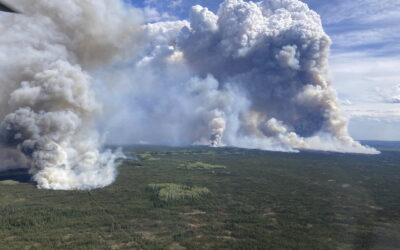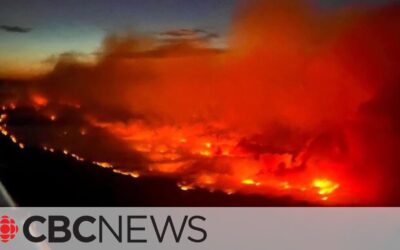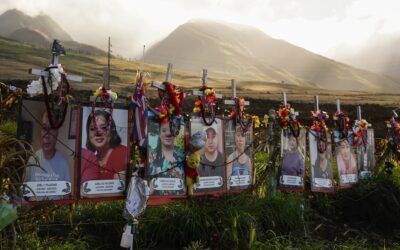This job is fantastic, and I wouldn’t want to do anything else. Being able to help during someone’s worst day runs deep in all first responders’ blood. However, the past few years have put us all through the wringer. Having been involved with the operations of multiple devastating wildfires, including the Tubbs Fire, Kincade Fire, Mendocino Complex, Wallbridge Fire, August Complex, and others in California, Washington, and New Mexico, I have found a new respect for the civilian evacuees who have been affected by these devastating events. Unfortunately for many of us, these fires have affected our own families. My wife and kids were evacuated during the Tubbs and the Kincade Fires and my parents during the Wallbridge Fire. Having to evacuate your own family and friends is a highly humbling event that instills in you a great sense of responsibility in managing and handling evacuations during a wildfire.

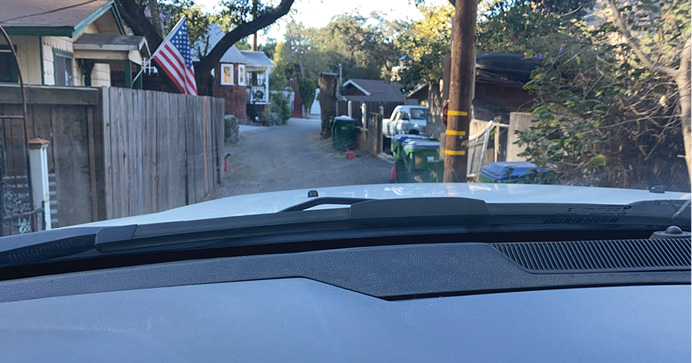
(1) During the Bond Fire in Orange County, California, in December 2020, I drove through a community to ensure the residents were safely back in their homes. (Photos by author.)
The Need for Evacuation
Over these past few years, these fires have grown as large and as fast as ever before. Creating large evacuation zones has become more critical than ever. During the Kincade Fire, the evacuation area included 90,000 people in Sonoma County, California. This was an unprecedented evacuation that was necessary because of the fire modeling and the incoming wind event. The fires have spread at such an unprecedented speed that our evacuation zones have substantially increased. To ensure civilians’ safety and provide the opportunity for first responders to focus on the firefighter, evacuating anyone in danger is a necessary move. The last thing we want is to hold off on an evacuation and end up putting someone in danger.
Creating a Connection
Over the years, I have gained a new respect for those who are affected by these fires. Having been evacuated myself and having my friends and family involved, I realize the immense importance of first responders’ interactions with evacuees. Accurate and honest information is imperative during these times. Leadership has made vast improvements with our emergency alerting systems and the overall capabilities of sharing important fire-related information. Fire management of these fires is doing a fantastic job of getting accurate information out to the public.
Getting this information is extremely important for easing the minds of evacuees. Understanding the “why” and “when” is important to them. They deserve answers in a timely fashion, and we have made significant improvements in these communication chains. There are many means through which information is disseminated, including social media, community meetings, television, and emergency alert systems. Sending frequent and accurate information will lessen the fear of inaccuracies that seems to inevitably make it through social media and create unnecessary confusion and panic. With all the efforts at the highest level, it’s also essential for the lowest level to take the same approach.
Remembering Why We Are There
As firefighters, it’s obvious that our priority is to protect civilians and property. This is what we train for and go to school to master. However, putting out the fire and protecting property are just parts of the picture. We are there as public servants, and our customer service level must be a high priority as well. Our interactions with these civilians and our compassion need to be at the top of the list. They are why we are there. Once you have evacuated yourself or your family, you appreciate those first responders who have that compassion and go out of their way to ensure you and your property are taken care of.
Being There and Listening
Sometimes our best action is to listen. We don’t have to have all the answers, but listening to these evacuees will go a long way in easing their pain and anxiety. Imagine not knowing if your property or animals have made it through the fire. This is a highly stressful time, and they deserve our attention. When you have the opportunity to be there for someone, be there. Take extra time to listen and help where you can. Never pass on a chance to be there for those who rely on us to mitigate an emergency. Their trust and respect are the most important things we can have as public servants.
How We Can Help
When assigned to these fires, we need to think of these homes and properties as our own. There are many ways we can help while the occupants are evacuated. Taking care of people’s animals is one of the most critical and respectful things we can do while we are out there. While on assignments, I try to carry cat and dog food just in case I come across an animal in need.
During the Oak Fire in Mendocino County, California, I came across an elderly lady sitting at a roadblock. After I stopped and engaged her in conversation, she became tearful because she was worried about her cat. I did what all of us would: I drove to her address and found the cat. I made sure the cat had food and water and returned to show her a picture of her property and cat. Her appreciation was overwhelming. This is what it’s all about. It’s not just fighting fire and saving lives; sometimes, our most significant contribution is a simple act of kindness.
Working with our law enforcement and Animal Control partners, we need to do everything we can to take care of these evacuees’ families. These animals are often a part of their family, and we need to treat them as such. Making sure the chickens have feed and water in their bowls is extremely fullfilling and reflects the highest level of public service.

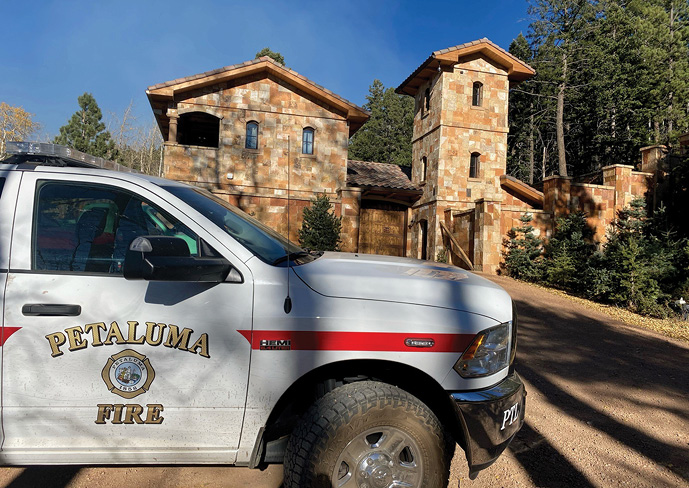
(2) During the Luna Fire near Chacon, New Mexico, in October 2020, I escorted a resident back home for supplies.

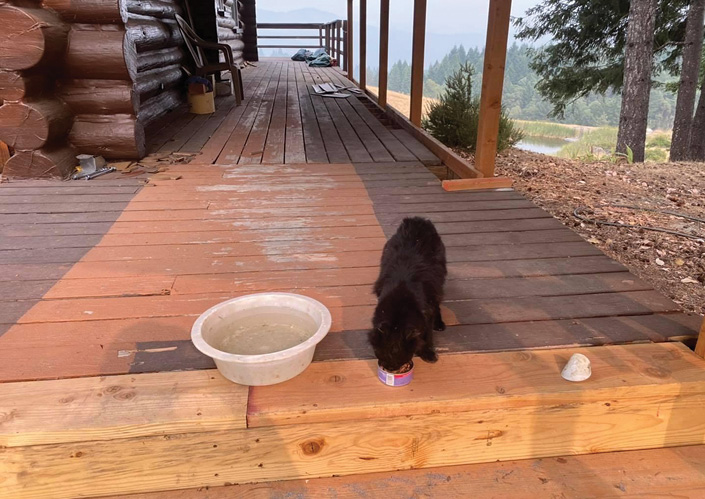
(3) During the Oak Fire near Ukiah, California, in September 2020, I fed and watered an evacuee’s cat to give her peace of mind.
Escorting Them In
Many times in a wildfire event, we will have an opportunity to escort people to their property to retrieve essential items. Of course, this can only be done when it’s safe to do so. Accompanying someone in to gather medications or essential items is extremely important and can result in a happy customer.
In New Mexico, I escorted a homeowner back to his summer home so he could winterize it. He feared that if he left without winterizing, there would be substantial damage to his house when the pipes froze. By my letting him button things up, he was extremely grateful, and it made me proud of what we do. It’s not only important that his home was spared from the fire, but he was able to get done what he needed to do and leave without that stress on his mind.
After the hazards have been mitigated and the fire threat has dissipated, leadership will start releasing people back into their homes. This is a critical time for us to connect and serve. This is not the time for us to relax; this is, quite frankly, one of the most important times of the incident. This is when we need to connect and be there for civilians. Show compassion and help wherever you can. Many times, they are returning after weeks of being evacuated. Remember that we are a full-service department, and these are the people we serve. Whether it is helping clean up the yard or helping move items, be there for them; be visible and be available, no matter what their need.
Another High Priority
Having had to evacuate myself and my family has driven home the importance of our interactions with evacuees. Although putting out the fire and saving lives and property are of the utmost importance, caring for evacuees throughout the event is a high priority. Humanity is just as essential as anything else, and providing the highest level of customer service should be our goal. Providing accurate information through our social media and community platforms is extremely important, as getting accurate information is extremely difficult for evacuees. Being there for them and answering their questions will help lessen their anxiety and stress.
We as firefighters need to remember why we are there and remember that our responsibilities go above and beyond the firefight. Taking the time to do the right thing is what this job is all about. The satisfaction of seeing the faces of people evacuated as they return to their home, knowing that we did everything we could, is priceless and highly fulfilling. Take the time to listen and be there for them when they need you. Sometimes the best thing we can do is listen, and sometimes those little things mean everything to those who have lost it all.
Chad Costa is a battalion chief for the Petaluma (CA) Fire Department. A 22-year fire service veteran, he has worked for CAL FIRE, rural districts, and semi-rural districts. He is the technology and communications battalion chief and an Operations Branch director on California Interagency Team 5. He has a bachelor’s degree in emergency services management and a certificate in homeland security.

